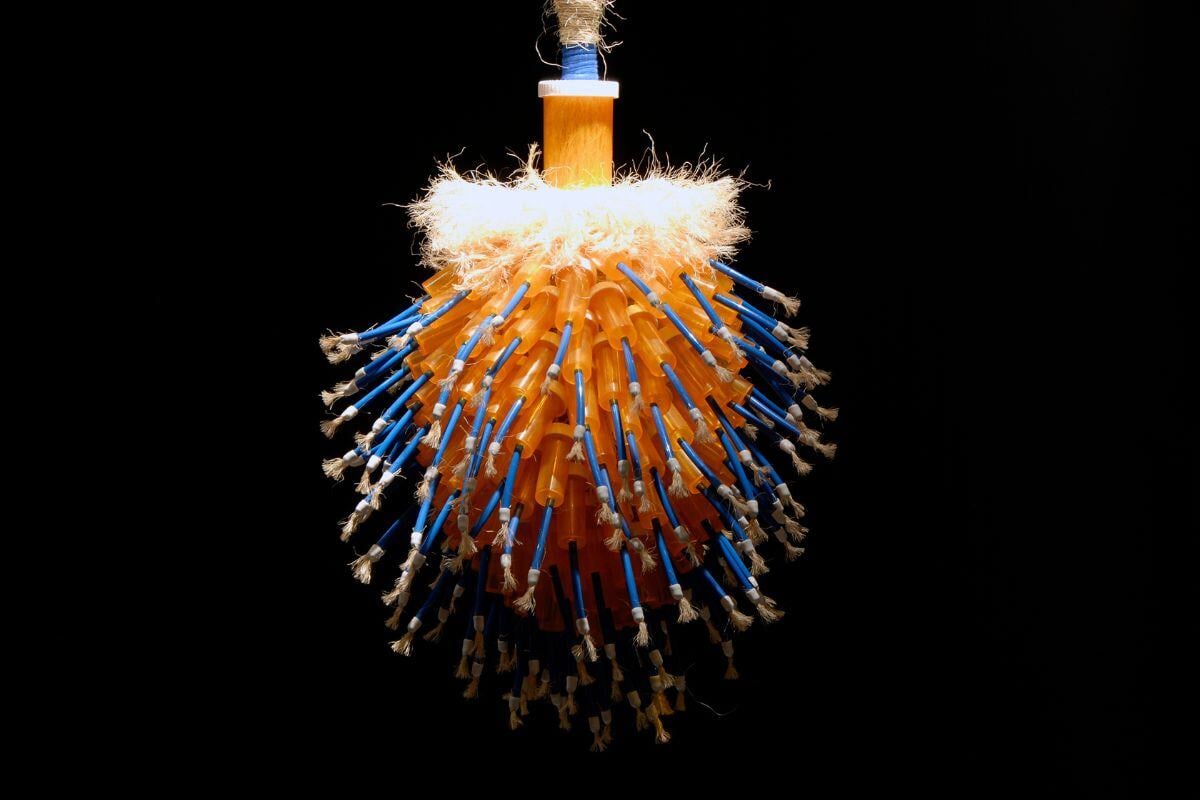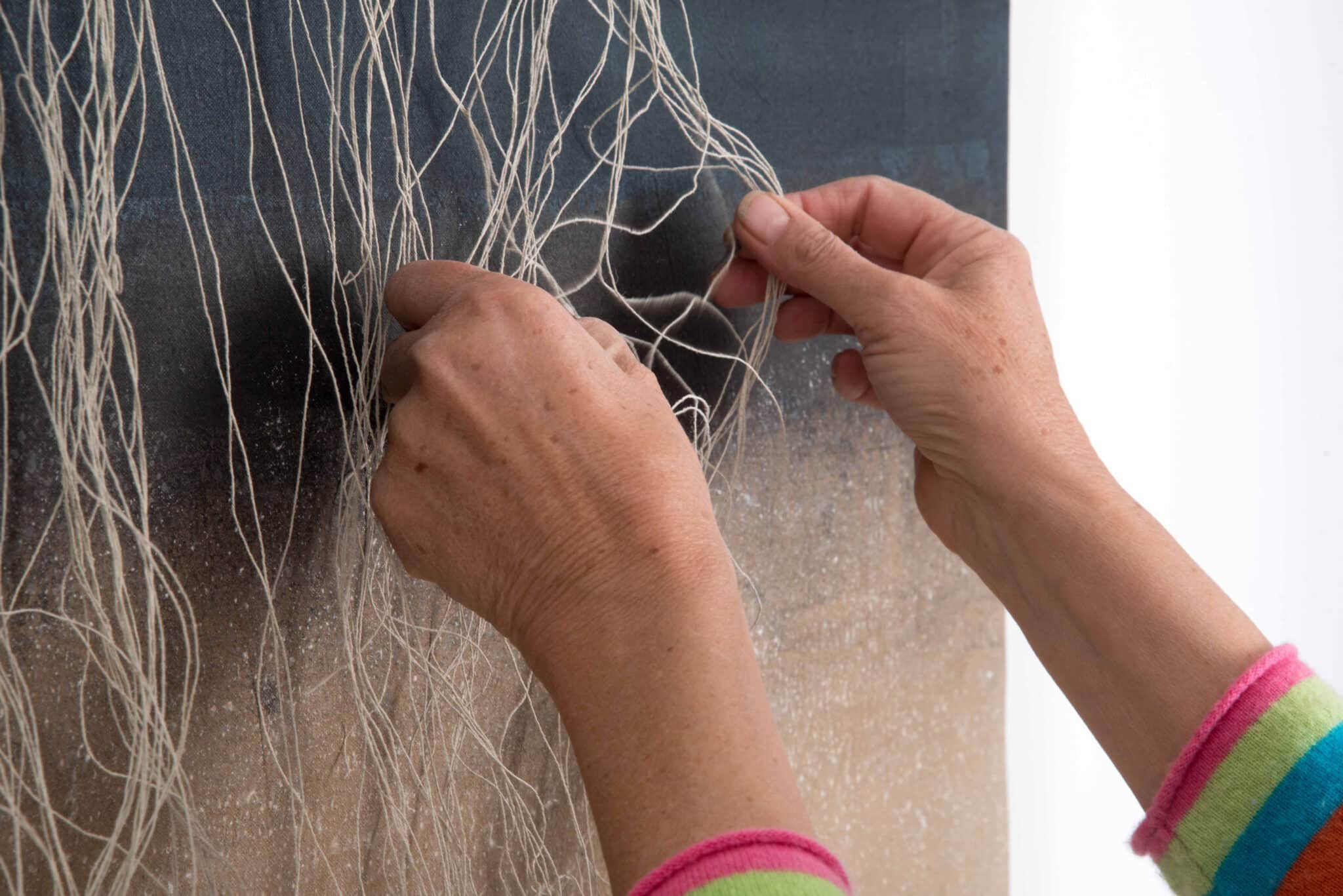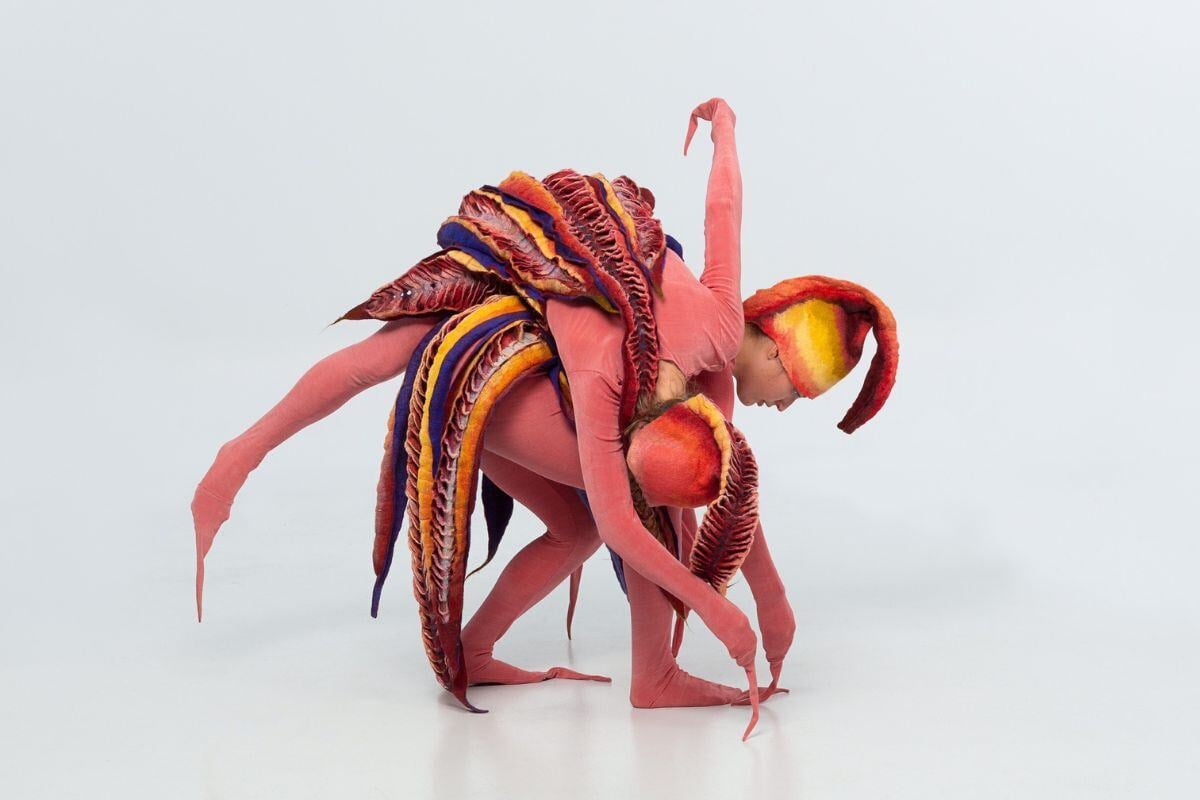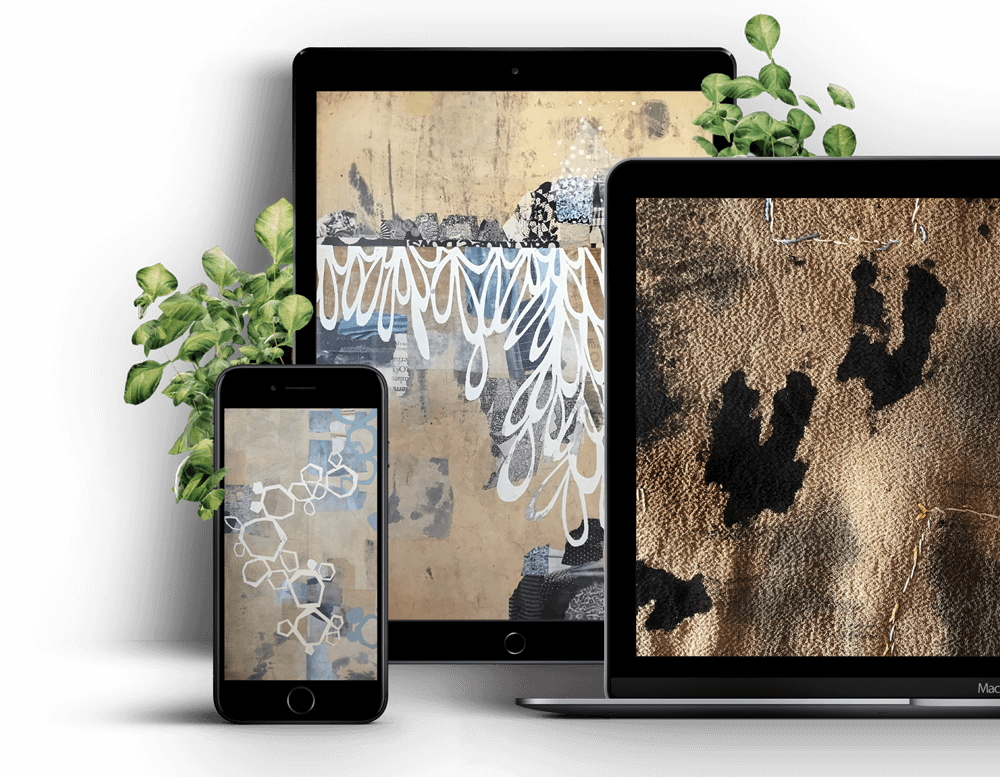Debbie Lyddon: A Vision of Sound
Explore the intersection of visual art and music with textile artist Debbie, who discussed the influence of sound and music on her art in a recent chat for our Friday Feature Artist interview series.
Debbie Lyddon’s Friday Feature Artist Interview can be found at the bottom of this page.
Norfolk-based artist Debbie Lyddon pays attention to light, weather, water, and sound.
These natural processes and phenomena inspire her work, which includes drawings, mixed media cloths, sculptures and installations. Impermanence, change, and degeneration plays a large part in making her work, and she can often be found immersing her cloth in the salt and sand that beckons just beyond her studio window.
Debbie’s inspiration comes from being out in the natural world, walking, noticing, collecting, and being curious. Originally trained as a classical musician at the Royal Academy of Music in London, Debbie’s practice aims to evoke a multi-sensory interpretation of her surroundings to promote an awareness of the relationship between the visual, aural, and tactile landscape.
Debbie’s work has been exhibited widely. She has been featured in numerous published books and has even written her own. Fibre Arts Take Two was thrilled and honoured to talk to Debbie about her work and the intersection between music and visual art.
Sound Before Vision
Before Debbie switched to visual arts, she studied at the Royal Academy of Music in London.
“I spent four years there playing the flute, the recorder and the piano,” she explains. Her studies led to a fair stretch of her career focusing on music, “I played and taught flute for about 10 years until I had my children. It’s really difficult to combine being a classical musician with having children because we were going about the country doing concerts. It’s just really difficult to suddenly go off to another part of the country for the night so that all gradually fell away, which is really sad, but I ended up just teaching. Then the teaching got a bit boring, so the art thing took over.”

Choosing Cloth
While the music was Debbie’s first pursuit, fibre arts have also always been part of her life. “I’ve always been a stitcher and a knitter, and I’ve drawn my whole life, so I suppose the art just took over. Then I did a City and Guilds creative embroidery course, and things snowballed on from there.”
The cloth was a natural choice of medium for Debbie. “I’ve got this love of cloth, which is just such a lovely material to manipulate. You can use it in so many different ways, not just embroidering on top of it, but you can use it with different materials, which is what I do now with wax and some bitumen and paint. You can manipulate it and put it into different shapes.”
From Aural to Visual
“My training as a musician has really stood me in good stead for being an artist because when you go to a music college, what you’re doing is you’re learning how to listen,” Debbie says on the impact of music on her visual art. “If you’re at an art college, I suppose you could say you’re learning how to look and to observe and to see things, but at music college, you’re sitting with other musicians who have to listen and you have to be able to react to what they’re doing instantaneously. Also, you get this very sensitised approach to sound and so well to music.”
The similarities between the disciplines of art and music don’t end there. “The language between the two is very similar. You would use the word colour in art, which is obvious, but you use colour in music as well. They both use tone, rhythm, and line. There’s this connection between the language you use for one and the other. When you’re trying to make a drawing of sounds, I find that the two languages join together, making it much easier for me to actually make a drawing.”
A Vision of Sound
Sound plays an integral role in Debbie’s creative process. “I see shapes and textures, and rhythms very much in the sounds that I hear,” she says. "So when I do drawings over the sounds around me, I take this training that I’ve had as a musician, and I find I can hear texture, I can hear lines, I can hear shapes in the sounds that I hear, and that I bring those into the drawings that I do. I think in many of the pieces I make, as far as the stitching pieces are concerned, they’re to do with rhythms.”
Part of the power of sound is in what you don’t even realise is there, says Debbie. “If you go out into the landscape, you think it’s quiet, we quite often go out into the countryside, and we say, ‘Oh, it’s so quiet and lovely.’ But it’s never quiet and lovely. In fact, quite often, the country is as loud as the town… but the sounds are different. We have the wind; there are the continuous sounds of seabirds, I mean like nonstop! And the waves… so silence is never there. There’s always some sort of texture or something happening.”

Getting Salty
Sound isn’t the only part of the natural world that inspires Debbie. She uses salt as a catalyst for much of her work.
Debbie explains, “I noticed that when I go into the water in my blue trousers that around the bottoms you get this lovely salty rime. So because they’re just old working trousers, I’m in and out of the water the whole time. The water dries, and then it gets wet again, and it dries and gets wet, and I was finding I was getting this wonderful salt rime around the bottom of my trousers.”
“I thought, ‘this is fantastic, wonderful marks, this is exactly what I’m looking for’, so I started throwing bits of cloth into the sea. It’s typical that when you try to do something, it just doesn’t work, not how I wanted it to! I decided to start making my salt solution because I thought I might have more control. I would get some normal table salt, put it in warm water, and let it dissolve. I was just screwing up bits of cloth or folding them up and putting them in and letting the water evaporate, and I found that the salt crystals would start forming as the water evaporated and dried out. If you let the water evaporate really slowly over a very long period of time, you get these wonderful square crystals.”
Salt is also fascinating to Debbie for its corrosive qualities. “All the pieces with salt will eventually disintegrate altogether. But I used that material because that’s what I wanted to do. Because it’s the same as if you leave pieces of work out in the environment, they will, especially cloth, eventually change. It will change its form; it will change its colour; it will disintegrate; it will become holed. The soul pieces will do that.”
“I’ve got pieces of work which are now maybe 10 years old, which are beginning to break down, and for me, they’re much better after 10 years than they were.”
What Makes Debbie Tick
“Rather than saying what I’m proud of, I would say I found something in life that I really, really enjoy and that I will probably never stop doing,” says Debbie, when asked about her personal pride.
“I hope I’ll be making work right until the moment I drop dead because it’s something that I passionately enjoy doing; creativity and getting materials and making something new out of them gives me a huge amount of joy. I love making things and the satisfaction it gives you when you’ve got something in front of you that has never been there before. I don’t know whether I would say I’m proud of it, but I certainly enjoy it. It’s certainly what makes me tick, and it’s certainly something that I will never stop doing.”

About the Artist
Debbie Lyddon is an artist and maker based in Wells-next-the-Sea, Norfolk.
Join Our Newsletter
OUR YOUTUBE CHANNEL
View our interviews and more on our Youtube channel!
OUR FACEBOOK GROUP
Join our Community and stay updated with our upcoming announcements!




